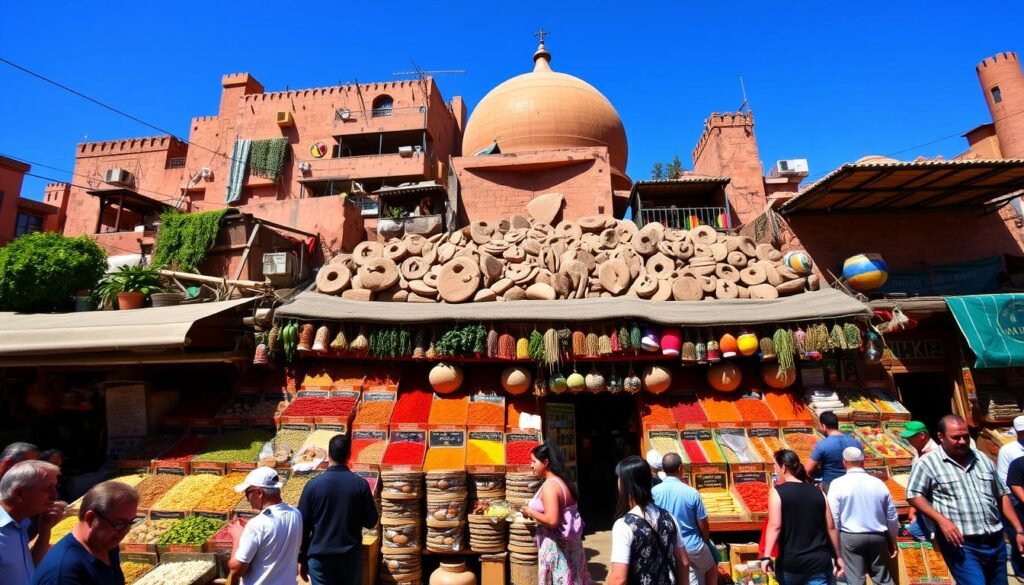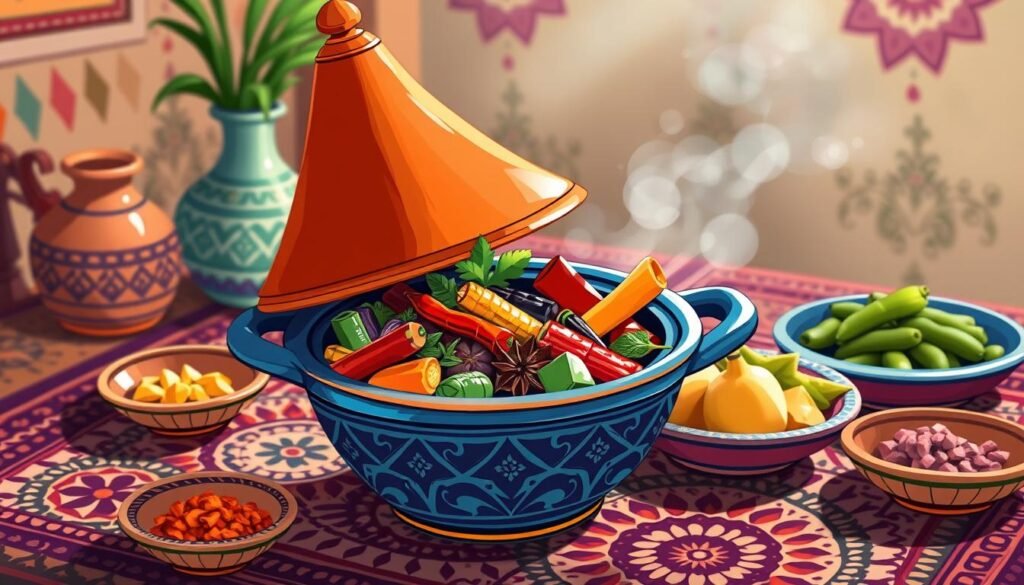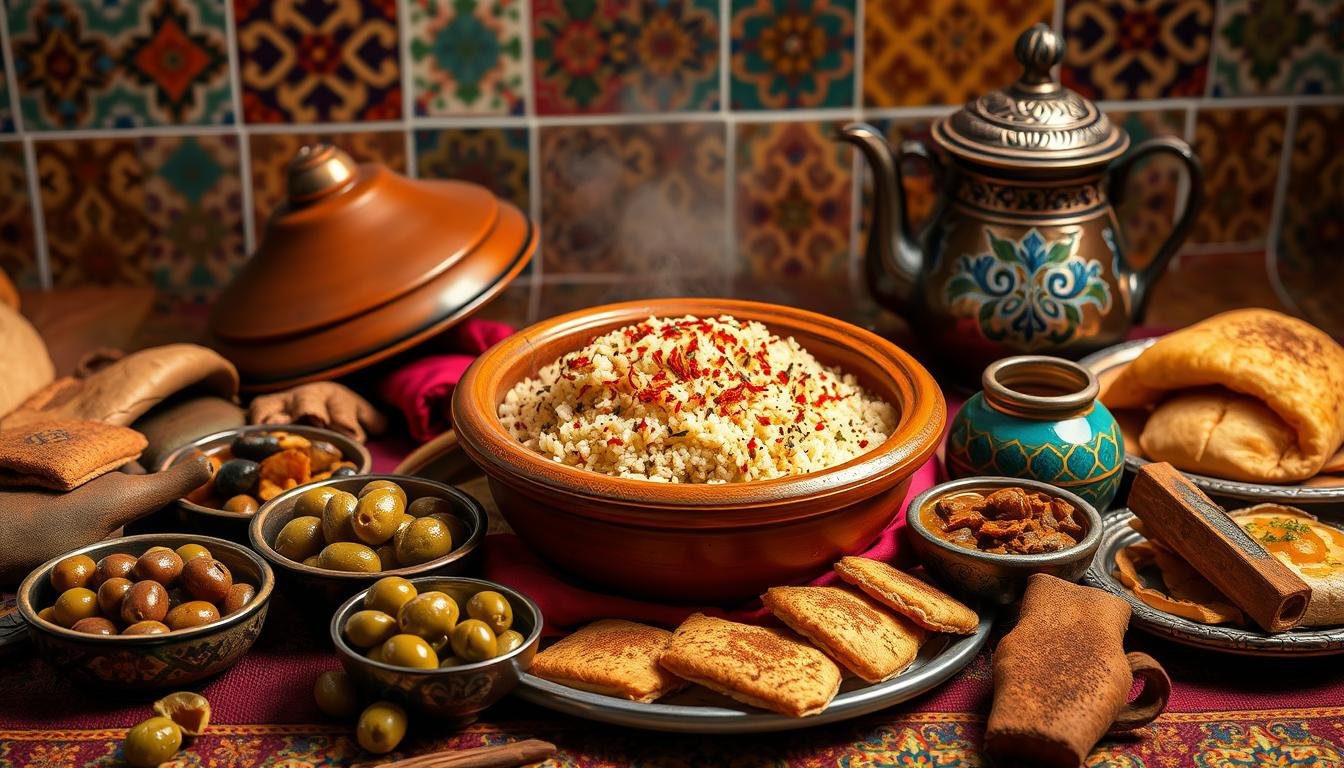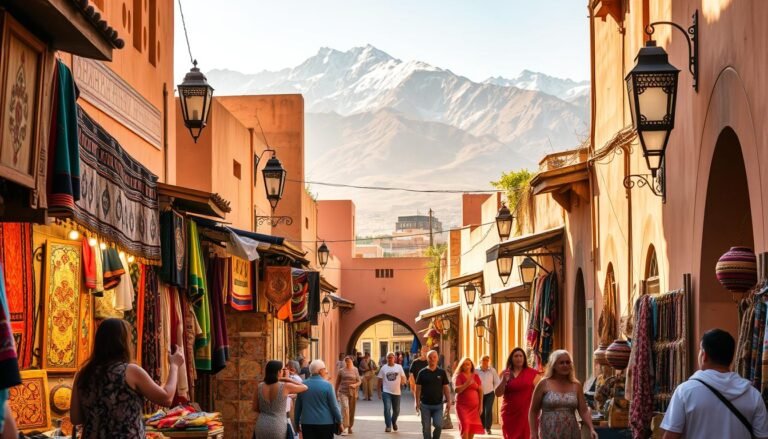Explore the Vibrant Tastes of Moroccan Cuisine
Moroccan food: Moroccan cuisine is a rich tapestry of flavors, reflecting the country’s history as a crossroads of civilizations. The bold and diverse flavors are achieved through the skillful use of spices like cumin, cinnamon, and saffron.
The cuisine is characterized by its balance of sweet and savory components, as seen in dishes like tagines and pastilla. Staple ingredients include couscous, olives, and preserved lemons, along with seasonal vegetables and meats, especially lamb and chicken.
With influences from Berber, Arab, Andalusian, and Mediterranean cultures, Moroccan cuisine offers a culinary adventure through the country’s rich cultural heritage. Exploring the diverse flavors and dishes provides a journey through Morocco’s history and traditions.
The Rich Heritage of Moroccan Cuisine
Moroccan cuisine is a rich tapestry woven from centuries of cultural exchange. This unique blend of flavors and cooking techniques has been shaped by the country’s strategic position at the crossroads of Africa, the Mediterranean, and the Arab world. As a result, Moroccan cuisine is characterized by its diversity and richness.
Historical Influences on Moroccan Food
The history of Moroccan cooking is marked by the influence of various cultures, including Arab, Berber, Andalusi, Mediterranean, and African cuisines. These influences have contributed to the development of a distinct culinary identity. As noted by food historians, “The cuisine of Morocco is a reflection of its complex history, with different cultures leaving their mark on the country’s culinary traditions.” The use of spices and ingredients such as cumin, coriander, and preserved lemons is a testament to these historical influences.
Regional Variations Across Morocco
Morocco’s diverse geography has led to distinct regional variations in its cuisine. Coastal areas emphasize seafood, while inland regions focus on meat and poultry dishes. The imperial cities of Fez, Marrakech, Meknes, and Rabat have developed sophisticated culinary traditions, often associated with royal courts and urban elites. In contrast, the Rif Mountains and Berber regions feature simpler, heartier dishes made with whole grains, legumes, and preserved meats. As a result, traditional Moroccan cuisine is characterized by its regional diversity.
The regional variations are also influenced by the local ingredients and culture. For instance, the oasis communities of southern Morocco have developed unique culinary traditions centered around dates, preserved meats, and drought-resistant crops. Similarly, the Saharan regions have their own distinctive food culture, adapted to desert conditions and influenced by nomadic traditions.
Essential Ingredients in Moroccan Food

At the heart of Moroccan cooking lies a blend of traditional spices and ingredients that create its distinctive flavor profiles. Moroccan cuisine is characterized by the use of a wide range of spices, including cinnamon, cumin, saffron, and ginger, which are often combined in complex blends.
Signature Spices and Flavor Profiles
The signature spices in Moroccan cuisine are what give its dishes their unique flavor profiles. Cinnamon and cumin are staples, used in a variety of dishes, from savory tagines to sweet pastries. Saffron, known for its luxurious flavor and aroma, is used to add depth to dishes like couscous and paella-inspired recipes.
Staple Ingredients in Moroccan Cooking
Moroccan cooking relies heavily on staple ingredients such as olive oil, garlic, and various meats like lamb and chicken. The use of preserved lemons and dried fruits also adds a unique twist to many dishes. Grains like couscous and bread are fundamental to the cuisine, often served alongside main dishes.
The Art of Ras el Hanout
Ras el Hanout, meaning “head of the shop,” is a blend of the finest spices a merchant has to offer. This complex mix can contain anywhere from 12 to 27 different spices, creating a warm, aromatic flavor profile. It’s typically used in special dishes like festive tagines and couscous.
10 Must-Try Moroccan Dishes
From the slow-cooked stews to the sweet pastries, Moroccan cuisine offers a culinary journey like no other. With a rich history and diverse influences, Moroccan dishes are a reflection of the country’s cultural heritage.

Tagine: The Iconic Slow-Cooked Stew
Tagine is a quintessential Moroccan dish named after the earthenware pot in which it’s cooked. This slow-cooked stew is typically made with lamb or chicken, a variety of vegetables, and a blend of spices including cumin, cinnamon, and ginger.
Couscous: Morocco’s National Dish
Couscous is a staple in Moroccan cuisine, made from semolina flour and often served with vegetables, meat, and a rich broth. It’s a dish that brings people together, typically served on special occasions.
Pastilla: Sweet and Savory Pastry
Pastilla is a traditional Moroccan pastry filled with layers of meat, onions, and spices, topped with a sweet layer of powdered sugar and cinnamon. It’s a complex and delicious dish often served at celebrations.
Harira: The Hearty Moroccan Soup
Harira is a comforting soup made with tomatoes, lentils, chickpeas, and broth, flavored with herbs and spices. It’s a popular dish to break the fast during Ramadan.
Moroccan Bread and Dips
Moroccan bread, often served with a variety of dips like chermoula and olive tapenade, is a staple in Moroccan cuisine. The bread is typically crusty on the outside and soft on the inside.
Sweet Treats and Desserts
Moroccan desserts are known for their sweetness and complexity, often featuring honey, nuts, and aromatic spices. Popular treats include kaab el ghzal, chebakia, and sfenj, each offering a unique taste experience.
Moroccan cuisine is a vibrant reflection of its rich history and cultural diversity. From savory tagines to sweet pastries, there’s a dish for every palate. Whether you’re exploring the local markets or dining at a traditional riad, the flavors of Morocco are sure to leave a lasting impression.
Moroccan Food Culture and Dining Traditions
The culture of Morocco is intricately woven into its culinary practices and dining etiquette. Moroccan cuisine is known not only for its rich flavors but also for the significant role it plays in bringing people together.

The Ritual of Moroccan Mint Tea
At the heart of Moroccan hospitality is the traditional mint tea, a symbol of welcome and friendship. The preparation and serving of tea are considered an art form, with green tea leaves, fresh mint, and sugar being the essential ingredients. This refreshing beverage is served throughout the day and is an integral part of social gatherings.
Communal Dining and Etiquette
In Morocco, dining is a communal experience. Meals are typically served on a large, shared platter, and diners eat with their hands, using bread as a utensil. This communal style of eating fosters a sense of togetherness and respect among those at the table. Understanding and respecting local dining etiquette is key to fully appreciating the Moroccan culinary experience.
Celebrations and Festive Foods
Moroccan celebrations, whether religious holidays, weddings, or family gatherings, center around elaborate meals featuring special dishes. For instance, during Eid al-Fitr, sweet treats like chebakia and sellou are enjoyed alongside savory dishes. These festive foods are an integral part of Moroccan culture and traditions, showcasing the country’s rich culinary diversity.
Conclusion: Embracing the Flavors of Morocco
As we explore the depths of Moroccan cuisine, we uncover a world of complex flavors and aromas that reflect the country’s rich cultural heritage. The diversity of Moroccan food is evident in its regional specialties, from coastal seafood dishes to hearty stews from the interior.
Moroccan dishes are not just about sustenance; they’re an integral part of the country’s social fabric, often served during communal gatherings and celebrations. The use of spices and flavors in Moroccan cuisine transforms simple ingredients into extraordinary meals. For those interested in exploring this culinary tradition, starting with basic recipes like vegetable tagine or herbed couscous is a great way to begin.







